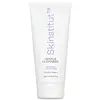What's inside
What's inside
 Key Ingredients
Key Ingredients

 Benefits
Benefits

 Concerns
Concerns

 Ingredients Side-by-side
Ingredients Side-by-side

Water
Skin ConditioningPoloxamer 184
EmulsifyingAmmonium Polyacryloyldimethyl Taurate
Emulsion StabilisingDecyl Glucoside
CleansingSodium Polyacryloyldimethyl Taurate
Emulsion StabilisingGlycerin
HumectantPolyglyceryl-3 Cocoate
EmulsifyingPolyglyceryl-4 Caprylate/Caprate
Polyglyceryl-4 Laurate/Sebacate
SolventPolyglyceryl-6 Caprylate
EmulsifyingPolyglyceryl-6 Ricinoleate
EmulsifyingSorbitan Sesquioleate
EmulsifyingCitric Acid
BufferingSodium Phytate
Phenoxyethanol
PreservativeSynthetic Fluorphlogopite
Tin Oxide
AbrasiveTitanium Dioxide
Cosmetic ColorantWater, Poloxamer 184, Ammonium Polyacryloyldimethyl Taurate, Decyl Glucoside, Sodium Polyacryloyldimethyl Taurate, Glycerin, Polyglyceryl-3 Cocoate, Polyglyceryl-4 Caprylate/Caprate, Polyglyceryl-4 Laurate/Sebacate, Polyglyceryl-6 Caprylate, Polyglyceryl-6 Ricinoleate, Sorbitan Sesquioleate, Citric Acid, Sodium Phytate, Phenoxyethanol, Synthetic Fluorphlogopite, Tin Oxide, Titanium Dioxide
Water
Skin ConditioningGlycerin
HumectantDecyl Glucoside
CleansingAmmonium Lauryl Sulfate
CleansingXanthan Gum
EmulsifyingEthylhexylglycerin
Skin ConditioningLactic Acid
BufferingTocopherol
AntioxidantPanthenol
Skin ConditioningPhenoxyethanol
PreservativeOlea Europaea Leaf Extract
PerfumingLycium Barbarum Fruit Extract
AstringentPotassium Sorbate
PreservativeCamellia Sinensis Extract
AntioxidantAloe Barbadensis Leaf Juice
Skin ConditioningMaltodextrin
AbsorbentSodium Hydroxide
BufferingSodium Benzoate
MaskingCitric Acid
BufferingCucumis Sativus Oil
EmollientWater, Glycerin, Decyl Glucoside, Ammonium Lauryl Sulfate, Xanthan Gum, Ethylhexylglycerin, Lactic Acid, Tocopherol, Panthenol, Phenoxyethanol, Olea Europaea Leaf Extract, Lycium Barbarum Fruit Extract, Potassium Sorbate, Camellia Sinensis Extract, Aloe Barbadensis Leaf Juice, Maltodextrin, Sodium Hydroxide, Sodium Benzoate, Citric Acid, Cucumis Sativus Oil
Ingredients Explained
These ingredients are found in both products.
Ingredients higher up in an ingredient list are typically present in a larger amount.
Citric Acid is an alpha hydroxy acid (AHA) naturally found in citrus fruits like oranges, lemons, and limes.
Like other AHAs, citric acid can exfoliate skin by breaking down the bonds that hold dead skin cells together. This helps reveal smoother and brighter skin underneath.
However, this exfoliating effect only happens at high concentrations (20%) which can be hard to find in cosmetic products.
Due to this, citric acid is usually included in small amounts as a pH adjuster. This helps keep products slightly more acidic and compatible with skin's natural pH.
In skincare formulas, citric acid can:
While it can provide some skin benefits, research shows lactic acid and glycolic acid are generally more effective and less irritating exfoliants.
Most citric acid used in skincare today is made by fermenting sugars (usually from molasses). This synthetic version is identical to the natural citrus form but easier to stabilize and use in formulations.
Read more about some other popular AHA's here:
Learn more about Citric AcidDecyl Glucoside is a glucose-based surfactant and emulsion stabilizer. It is created by reacting glucose with the fatty acids from plants.
Surfactants help clean the skin by trapping oil, sebum, and dirt to be washed away. As an emulsion stabilizer, it stabilizes the ingredients in a product by preventing them from separating.
This ingredient is biodegradable and non-toxic. This ingredient is commonly found in baby shampoos.
Decyl Glucoside is sometimes used to stabilize the UV filter Tinosorb.
Learn more about Decyl GlucosideGlycerin is already naturally found in your skin. It helps moisturize and protect your skin.
A study from 2016 found glycerin to be more effective as a humectant than AHAs and hyaluronic acid.
As a humectant, it helps the skin stay hydrated by pulling moisture to your skin. The low molecular weight of glycerin allows it to pull moisture into the deeper layers of your skin.
Hydrated skin improves your skin barrier; Your skin barrier helps protect against irritants and bacteria.
Glycerin has also been found to have antimicrobial and antiviral properties. Due to these properties, glycerin is often used in wound and burn treatments.
In cosmetics, glycerin is usually derived from plants such as soybean or palm. However, it can also be sourced from animals, such as tallow or animal fat.
This ingredient is organic, colorless, odorless, and non-toxic.
Glycerin is the name for this ingredient in American English. British English uses Glycerol/Glycerine.
Learn more about GlycerinPhenoxyethanol is a preservative that has germicide, antimicrobial, and aromatic properties. Studies show that phenoxyethanol can prevent microbial growth. By itself, it has a scent that is similar to that of a rose.
It's often used in formulations along with Caprylyl Glycol to preserve the shelf life of products.
Water. It's the most common cosmetic ingredient of all. You'll usually see it at the top of ingredient lists, meaning that it makes up the largest part of the product.
So why is it so popular? Water most often acts as a solvent - this means that it helps dissolve other ingredients into the formulation.
You'll also recognize water as that liquid we all need to stay alive. If you see this, drink a glass of water. Stay hydrated!
Learn more about Water